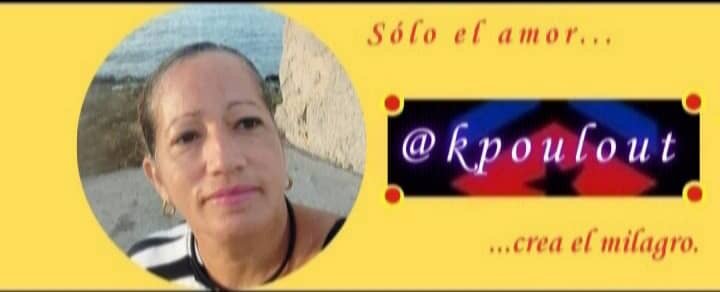Guanajay, su arquitectura y su Villa Jabón Candado/Guanajay, its architecture, and its Villa Jabón Candado (Esp-Eng)
Como aún no he tenido la posibilidad de viajar fuera de Cuba y conocer otros países y culturas, me dedico a conocer y visitar todos los sitios que puedo por acá. En reciente visita a la cuidad de Guanajay, en la provincia Artemisa, pude constatar que esta ciudad posee una sorprendente arquitectura con encanto colonial. Esta es una urde con calles adoquinadas y con el típico parque con glorieta que suele haber en muchas ciudades y pueblos de Cuba, y donde tampoco puede faltar la Iglesia.
Hello, hivers. A warm greeting to all the travelers and adventurers who visit my blog.
Since I haven't had the chance to travel outside of Cuba and get to know other countries and cultures yet,I dedicate myself to getting to know and visiting all the places I can around here. On a recent visit to the city of Guanajay, in the Artemisa province, I was able to see that this city possesses a surprising architecture with colonial charm. This is a city with cobblestone streets and the typical park with a gazebo that is common in many Cuban cities and towns, and where the church is also an essential feature.





Guanajay is one of the most important sites for producing tobacco, the famous Cuban tobacco known and demanded all over the world. The poet Julián del Casal was born here. In my humble opinion, a serene atmosphere permeates Guanajay. During my tour, I saw several very beautiful buildings and spaces that my camera's restless and mischievous lens captured.



However, when I saw a house with a particular detail, like some I had seen a long time ago, my mind began to travel backwards in time. Surely Cubans, all across the island, have at some point seen certain houses with a very characteristic sign on their facade that says: Villa Jabón Candado. In Santiago de Cuba, where I lived until I was 34, I saw several of these houses in the city and I always found them very pretty. Of course, I already knew their history from back then, but it's only today that I have the opportunity to talk about the subject.


The "Villa Jabón Candado" houses are very particular dwellings. A type of house with a similar facade and architecture. They were the result of an advertising campaign by the Crusellas Soap Factory, before 1959. This campaign lasted approximately twenty years, and there were many lucky winners. If you bought a bar of their Jabón Candado, Cubans had the chance to win a completely furnished house. The organizing company, Crusellas & Company, responsible for selling Jabón Candado laundry soap, was the one that promoted this kind of raffle or draw. The mechanism involved a hidden capsule, placed at random, inside a certain number of soap bars. This capsule contained the voucher to claim the house.




What a great sales method,worthy of admiration; it's a shame this type of initiative stopped being used in Cuba, with so many people in need of housing. The architectural style of the VJC is that of the Spanish Colonial Renaissance. As a curious fact, I can tell you that they were the first houses in America to use a solar energy system to heat water. This was achieved through a system of pipes on the roofs that, heated by the sun, raised the water temperature for domestic use. Something with a principle very similar, I suppose, to that of current solar panels; they would essentially be the grandfathers or great-grandfathers of the panels so widely used around the world today.



Can you imagine living in Cuba in the 1950s, being a simple shoeshine boy or a domestic worker without a roof over your head, and being lucky enough to buy one of these prize-winning soaps? Can you imagine the immense joy of going from having nothing to having a beautiful house, with a front porch, living room, dining room, kitchen, three bedrooms, a bathroom, and on top of that, furnished?



I have no doubt that more than one of the lucky winners must have gotten a sharp spike in blood pressure,at best, just as I don't doubt that someone might have fainted from the shock and joy. This practice, which benefited many people who otherwise could never have had a decent home, ceased to exist with the triumph of the revolution. The "Villa Jabón Candado" houses are evidence of an era of commercial ingenuity in Cuba; they were truly experts in marketing and promotion. If you are a foreigner and have the chance to visit my country, keep your eyes open; it's very likely that, in the least expected place, you will find one of these peculiar villas with its padlock on the facade.



Gracias por visitar mi blog
Texto e imágenes de mi propiedad
Thanks to visite my blog
Text and imagen are my own

 |  |
|---|
You can check out this post and your own profile on the map. Be part of the Worldmappin Community and join our Discord Channel to get in touch with other travelers, ask questions or just be updated on our latest features.
What an interesting read! that’s such a creative marketing idea, especially for that time. It’s fascinating how history and architecture intertwine in Cuba 🇨🇺 Your post really made me want to explore these charming old towns someday! ✨
Gracias, amiga por mostrarnos Guanajay y la info sobre la promo de Crosellas & Co.
Aunque todavía hay una promo similar: si no vas a la marcha, si no pagas..., si no dices... Te botamos del trabajo o te votamos como... 😜
Jajajaja.
Gracias por compartirnos tanto. Eres una megachica
Delegate your Hive Power to Ecency and
earn daily curation rewards in $Hive!
La arquitectura de Cuba es una de mis favoritas 😊
That's a great achievement from nothing to living in a beautiful house.Thats something to be proud of.
Había oído esa historia antes pero no a profundidad gracias por traernos esos recuerdos de una Cuba pasada
Nice place and view the I can totally see the support of the structures and the design also I also see that it uses accurate support for the that strucutre
The design and architecture of the building looks very old. I really enjoyed reading your article.